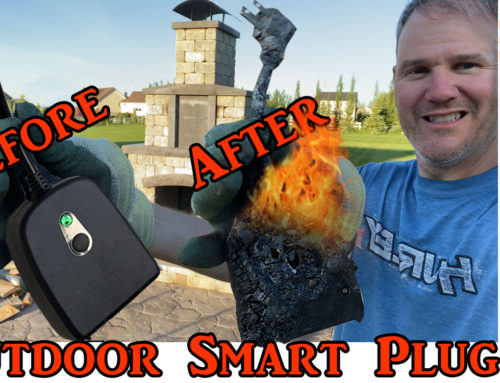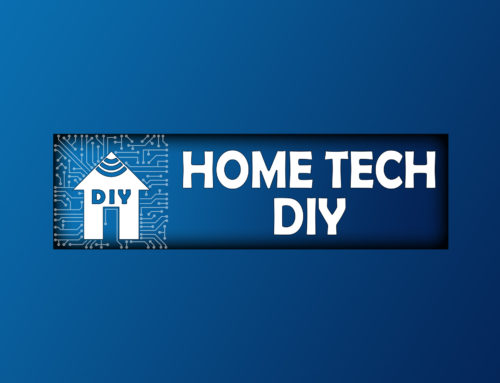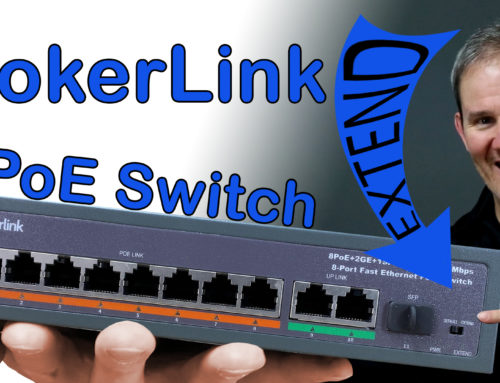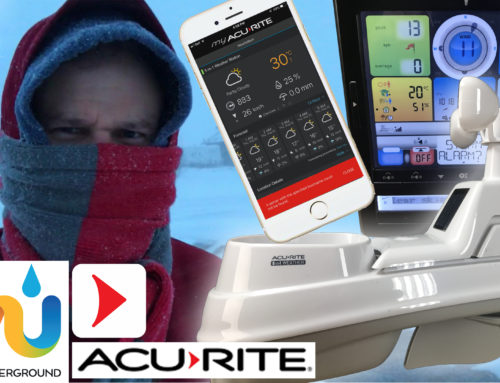My need is to be able to walk from my basement to my upper bedrooms and then outdoors around the perimeter my property with a strong WiFi signal. I’ll need multiple access points due to the large square footage of my 3-level home. I want my portable devices to connect to the strongest access point with no effort by me and in fact, I want it to be seamless as I move from one access point to the next. No delay, no switching networks and only one password.
Ubiquiti UniFi AP AC PRO 802.11ac Scalable Enterprise Wi-Fi Access Point (UAP-AC-PRO-E-US) PoE Adapter Sold Separately
Today we are unboxing and configuring these 2 Ubiquiti Networks UAP-AC-PRO-E Access Point for wireless access to my network.
My current Internet modem has a network WiFi router built in, which is pretty typical these days. This device is located in my basement, in a corner between concrete walls and a metal furnace with duct work all around. The WiFi signal strength is suffering because of its location; especially 2 floors up and my outdoor connectivity is pretty much non-existent. I don’t want to remove it from this spot.
In fact, let’s test the LAN speeds from several locations with my current setup and then again once the Ubiquiti setup is installed.
I’ll use my Surface PRO and a LAN speed testing software. I’m not testing Internet speed as it fluctuates too much and will not provide a representation of my connectivity to my LAN, but rather to the Internet. Here is a look at my baseline speeds to beat.
Ubiquiti has been heavily involved in the commercial and enterprise network space and I have used their products in the past. The biggest complaint I had was the complexity of configuring their hardware with their web based front-end. To solve this, they have new UniFi software which runs on a separate computer or from the cloud. For my purposes, this controller software can setup the access points, then I can shut off the controller. It doesn’t need to be running all the time.
This is the -E version of the Pro Access Point, and therefore you will not find a PoE power injector or power supply in this box. There are also no ethernet cables. I will be using the same PoE switch to power this device as I do my IP Cameras using 802.3af. High-five to Ubiquiti for saving me some money by not including this hardware and for keeping electronics out of the landfill or recycling depot as that’s where the injector would end up since I don’t need that. If you need the PoE injector, make sure to order the model which includes it. Remember however that if you buy the Lite or Long-Range versions of this access point, you have to use the included PoE injector as it will not work with a PoE switch.
There is a main gigabit ethernet connection for your network connection and a gigabit secondary port if you want to carry on the network to another device. I would not expect the power from the PoE to continue down this secondary line.
- This is a plastic wall or ceiling mount. The access point attaches and locks to this.
- This metal ceiling back plate is used if you have a drop ceiling or ceiling tiles to fasten the mount in place. The ceiling tile gets sandwiched in between the 2.
- The longer screws and nuts are for installing the ceiling plate
- The shorter screws and anchors are for installing just the mount
Lastly, there is a quick start guide. This does not cover any of the UniFi system configuration, just the basics of the physical install. Documentation for the controller software can be found on the download page for the UniFi software. https://www.ubnt.com/download/#!unifi
These 2 access points will be hard wired into my network, but you could actually just plug 1 access point into you network and extend your network to the other access point wirelessly. You could then access your network with your phone or other WiFi device through either access point. The performance isn’t as good this way because if you are connected to the wireless access point, the signal is router thought the wired one to access your network or internet.
Let’s plug these into the PoE switch and install the controller software. I’m not going to do a full review of the software as that would take a lot of time, I’m just going to show what I need to get these up a running.
Before installing these permanently, I’m going to place them in the general area for testing. One on the main floor and one in the basement.
Also, note that the range of these access points is awesome, but if you are not seeing good performance, it might be because your WiFi device, like your phone is not able to transmit at this same distance. Let’s test the speed again, to see the improvements. (See if the controller shows my moving from one AP to another)
Ubiquiti UniFi AP AC PRO 802.11ac Scalable Enterprise Wi-Fi Access Point (UAP-AC-PRO-E-US) PoE Adapter Sold Separately
Linksys LGS116P 16 Port Gigabit Unmanaged Network PoE Switch with 8 PoE+ Ports @ 80W - Ideal for Business, Home, Office, IP Surveillance - Ethernet Switch Hub with Metal Housing, Desktop / Wall Mount
$108.99Now that I have these 2 access points are up and running, I no longer need the Wifi signal from my router, so I’ll shut that off. I have always been a fan of the Ubiquiti products, right from my first PicoStation. They have certainly made their user interface much friendlier since then, without removing the more advanced features. I’m quite impressed with my new setup and the speeds are great. I am able to roam from one access point the another seamlessly, just as I hoped. If you found this video helpful, please like and subscribe to my channel. Thanks for watching.
















